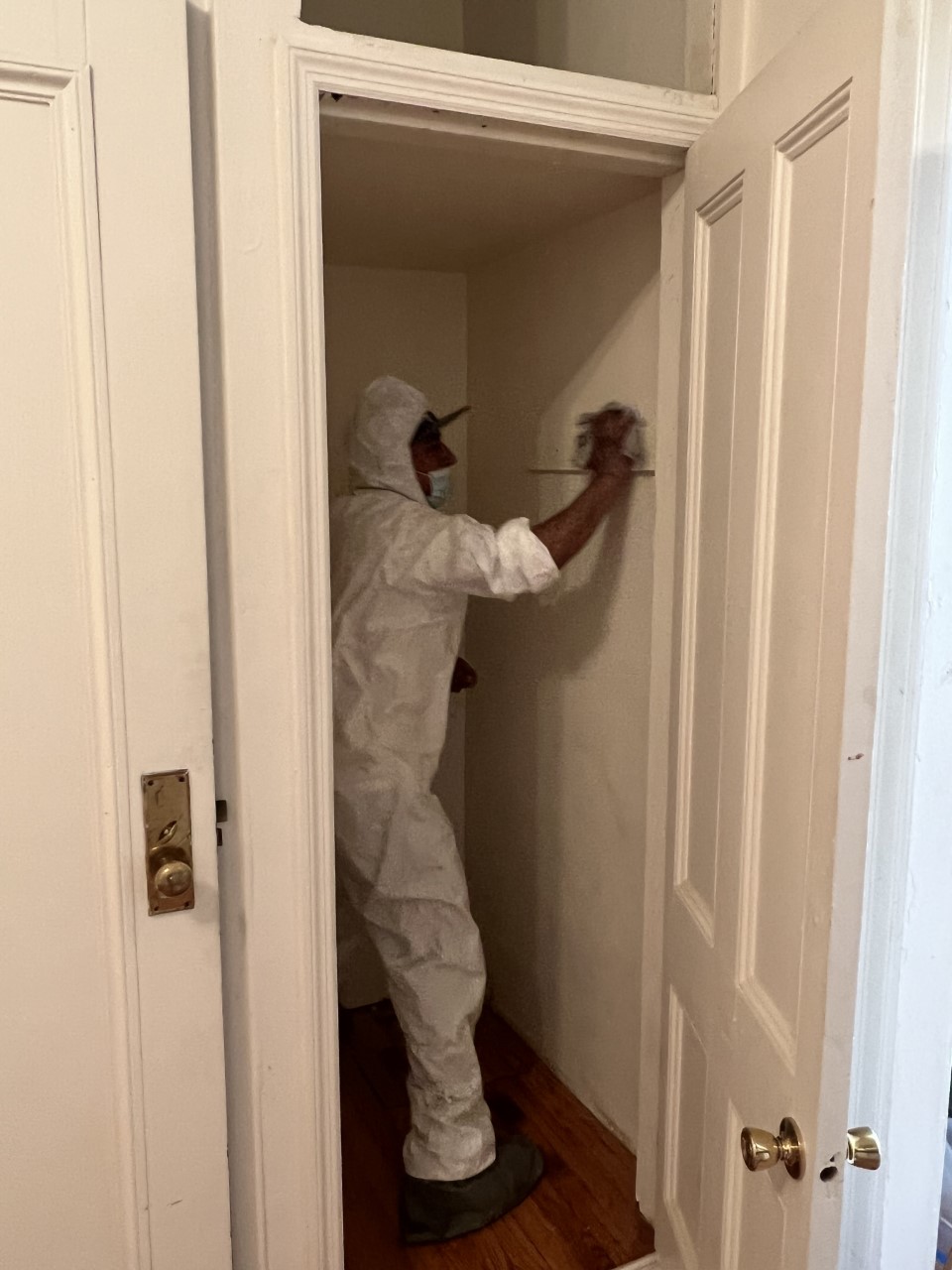NYC Lead Paint Removal Company-- Guaranteeing Safe and Legal Compliance
NYC Lead Paint Removal Company-- Guaranteeing Safe and Legal Compliance
Blog Article
Comprehensive Guide on Effective Lead Offense Removal Strategies
In the realm of environmental safety, dealing with lead infractions requires a careful and organized strategy. This thorough guide begins by highlighting the critical preliminary actions of identifying lead hazards through sophisticated evaluation and screening techniques. The overview clarifies on the relevance of adhering to rigid safety protocols during the removal procedure, consisting of the use of correct PPE and isolating impacted locations.
Identifying Lead Hazards
Recognizing lead dangers is a vital initial step in minimizing the risks related to lead direct exposure. Lead, a harmful steel, can be present in different environmental tools, including paint, dirt, water, and dust. It postures serious health and wellness risks, specifically to kids and expectant women, resulting in neurological damage and developmental hold-ups. Exact identification of potential lead sources is crucial for efficient removal.
The first stage in recognizing lead dangers entails understanding usual lead sources within the developed setting. Structures constructed before 1978 are particularly at risk as a result of the common use lead-based paint during that period. Additionally, soil contamination can occur from wearing away exterior paint, commercial discharges, or historical usage of leaded gasoline.
An additional substantial resource is lead piping and pipes components, which can seep introduce drinking water. Consumer items such as toys, porcelains, and imported items might also include hazardous lead levels. Significantly, work atmospheres and leisure activities including lead can track impurities right into homes.
Analysis and Testing
When addressing lead threats, efficient evaluation and screening are paramount. First assessment usually involves an aesthetic evaluation to determine prospective lead sources, such as weakening paint or infected dirt.

Dust clean sampling is another vital technique, especially in residential settings. By accumulating examples from floors, windowsills, and various other surface areas, this technique offers understandings into potential exposure dangers. Soil screening around structure boundaries is vital to find lead contamination that might pose threats, specifically to kids.
Safe Elimination Treatments
Upon completing complete assessment and testing, carrying out secure elimination procedures is the next crucial phase in dealing with lead dangers. This procedure makes sure that lead-contaminated materials are successfully Go Here and securely eliminated, decreasing risk to both workers and residents. The first action includes isolating the affected location using plastic sheeting and appropriate sealing methods to avoid the spread of lead dirt.
Workers need to wear ideal individual safety tools (PPE), consisting of respirators, handwear covers, and non reusable coveralls, to mitigate direct exposure. Employing specialized devices and damp techniques, such as damp sanding or using HEPA-filtered vacuum cleaners, lowers the diffusion of lead bits. It is essential to prevent completely dry fining sand or abrasive blowing up, as these methods can generate unsafe lead dust.
Waste disposal is an additional crucial component; all contaminated materials have to be firmly nabbed and labeled according to EPA and neighborhood policies. Additionally, complete cleaning of the like this workplace with HEPA vacuum cleaners and damp cleaning makes sure the elimination of recurring lead bits.
Post-Removal Verification

Verification of effective lead removal, recognized as post-removal verification, is critical to make certain the safety and security and habitability of the remediated area. This assessment makes certain that all known sources of lead have actually been attended to and that no noticeable indications of contamination remain.
Complying with the visual assessment, environmental tasting is conducted. This involves collecting dirt, soil, and in some cases water samples from the remediated area. Recognized labs evaluate these examples to measure lead degrees, guaranteeing they drop below the safety limits developed by regulative bodies such as the Epa (EPA)
On top of that, air quality testing may be executed to identify air-borne lead particles, especially in cases where substantial lead-based paint removal or renovation has occurred. The outcomes of these examinations offer measurable information confirming that the lead degrees are within permitted limits.
Inevitably, post-removal confirmation offers as an important checkpoint, validating the efficiency of the lead abatement efforts and securing the use this link health and wellness of passengers and visitors.
Preventative Steps and Maintenance

A vital precautionary measure includes using lead-safe accredited contractors for any type of renovation, repair service, or paint activities. These specialists are trained in methods that minimize lead dust and particles. Additionally, preserving coloured surfaces to prevent damaging or peeling is necessary, as deteriorating paint can release lead fragments right into the environment.
Educational efforts targeting home proprietors and tenants concerning the risks of lead and the relevance of reporting any prospective dangers can better enhance precautionary initiatives. Regular cleansing making use of HEPA vacuums and wet mopping methods can substantially lower lead dirt accumulation.
Conclusion
In summary, efficient lead infraction elimination necessitates a meticulous method including complete analysis, specific screening, and rigorous elimination treatments. Ensuring safety through proper seclusion and individual safety tools continues to be extremely important. Post-removal confirmation using ecological tasting and air high quality testing validates compliance with established safety criteria. Recurring examinations and maintenance are necessary to mitigate future lead hazards, therefore securing public wellness and guaranteeing continual conformity with regulatory needs.
Report this page